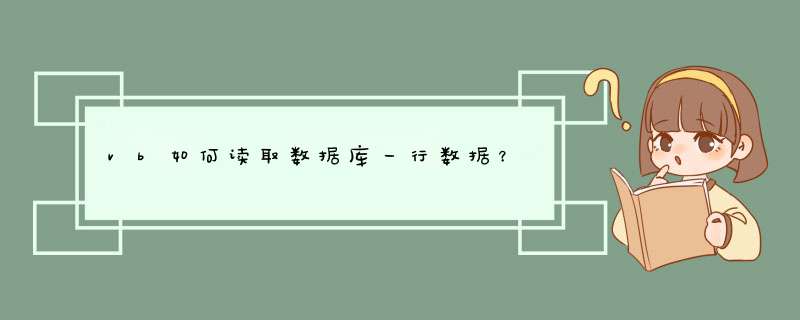
'读取方法:
Imports System.IO
Public Class Form1
Private Sub Button1_Click(ByVal sender As System.Object, ByVal e As System.EventArgs) Handles Button1.Click
Me.ListBox1.Items.Clear()
Dim StrRed As StreamReader = New StreamReader("D:\111.txt", System.Text.Encoding.Default)
While Not StrRed.EndOfStream
Me.ListBox1.Items.Add(StrRed.ReadLine())
End While
StrRed.Dispose()
End Sub
End Class
'其它读写方法:
写入:
Private Sub Button2_Click(ByVal sender As System.Object, ByVal e As System.EventArgs) Handles Button2.Click
Dim strR As New StreamWriter("D:\111.txt", True)'参数True表示 在原来的数据上面添加,如果为False这删除原来的数据 重新写入数据
strR.WriteLine(Me.TextBox2.Text)
strR.Dispose()
End Sub
读取:
Private Sub Button3_Click(ByVal sender As System.Object, ByVal e As System.EventArgs) Handles Button3.Click
Dim strR As New StreamReader("D:\111.txt")
While Not strR.EndOfStream
Me.TextBox1.Text += strR.ReadLine() &vbCrLf
End While
strR.Dispose()
End Sub
不知道你数据表中那一列数据是什么类型的数据,所以我全部按字串来处理。首先声明一个数组,和即将用来计数的数字:
dim nums() as stringDim i As Integer = 0mycon.open '然后,连接数据库,按你的声明来:dim mycom as new sqlcommand("select * from 你要读取数据的表", mycon)'接下来,声明一个执行数据库语句命令的com:'然后,对数据库返回的结果进行 *** 作(一般会将执行结果存放起来,再 *** 作,我这里省去了存放这步):With mycom.ExecuteReader() '对返回的结果,即查询到的表进行 *** 作 If .HasRows Then'判断是否有数据,有数据就进入下面进行读取 Do While .Read '读取一行数据 If Not (String.IsNullOrEmpty(.GetString(0))) Then '检查表列的数据是否为空,不为空就进入下面,进行保存。这里要说下getstring这个,是读取某列数据中的字串,如果该列数据不是字串,那么需要用getvalue(0),0代表该列在表中的位置,从0开始,即0表示第一列。 ReDim Preserve nums(i) '重置数组大小,即为即将要保存的数据准备一个位置nums(i) = .GetString(0) '将数据放入到数组中i = i + 1 '循环,直到结束 End IfLoopEnd IfEnd Withmycon.close '最后记得要关闭数据库连接
数据存入数组很简单,其实难点是连接数据库,从数据库拿数据,这难点原理简单,但因为格式,数据类型等问题,很容易出错。
以上,数据到了数组,你应该会 *** 作了吧。其实建议直接对从数据库返回的结果进行 *** 作,不需要用数组的。
欢迎分享,转载请注明来源:内存溢出

 微信扫一扫
微信扫一扫
 支付宝扫一扫
支付宝扫一扫
评论列表(0条)